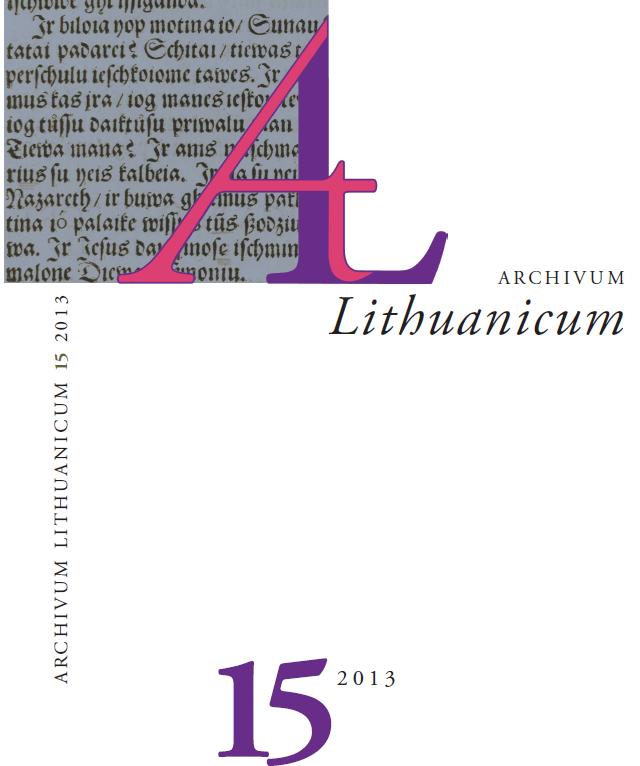Vilento Lk 2,47: homografinė skirtis ar spaudos riktas?
Luke 2:47 by Vilentas: A homographic distinction or a typographical error?
Author(s): Jurgis PakerysSubject(s): Theoretical Linguistics, Historical Linguistics, Baltic Languages, Translation Studies
Published by: Lietuvių Kalbos Institutas
Keywords: Luke 2:47 by Vilentas; orthographic innovations; Lithuanian language;
Summary/Abstract: Baltramiejus Vilentas (Bartholomäus Willent) is famous for a number of orthographic innovations in Lithuanian, one of them being the extensive use of <ũ> in his translation of Luther’s “Enchiridion” and the lectionary “Euangelias bei Epistolas,” both published in Königsberg in 1579. In these books, the letter <ũ> has two main functions (cf. Kabašinskaitė 2005), viz., (1) it predominantly marks the long stressed vowel /uː/ and thus helps avoid a number of homographs (cf. gen. pl. ſwecʒũ vs. instr. sg. ſwiecʒu of svečias ‘guest’) and (2), in some endings, <ũ> is written due to the tendency to distinguish certain grammatical forms (gen. pl., subj. 3), despite the fact that their endings are not always stressed and the vowels are shortened (cf. gen. pl. walgimũ [the stress is most probably on the root] vs. instr. sg. walgimu of valgymas ‘eating, meal’). It has to be noted that <ũ> appears not only in the endings where the nasal vowels are historically possible, but also in other positions where the nasal articulation is not expected (e.g. nom. pl. jũs of ‘you’, fut. 3 bũs of būti ‘be’, etc.). This suggests that <ũ> is most probably not intended to mark the nasality of the vowel and is not related to the Latin tradition to use tilde for the omission of <n> which subsequently gave rise to the marking of nasal articulation in a number of languages.
Journal: Archivum Lithuanicum
- Issue Year: 2013
- Issue No: 15
- Page Range: 87-112
- Page Count: 26
- Language: Lithuanian

